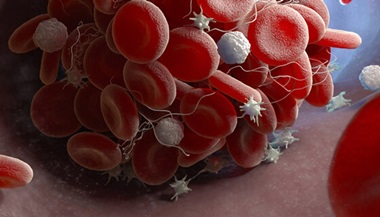Facts About Blood
What is blood?
Blood is the life-maintaining fluid that flows through the body's blood vessels:
-
Arteries
-
Veins
-
Capillaries
What is the function of blood?
Blood carries the following to the body tissues:
-
Nourishment
-
Electrolytes
-
Hormones
-
Vitamins
-
Antibodies
-
Heat
-
Oxygen
Blood carries the following away from the body tissues:
-
Waste matter
-
Carbon dioxide
What is blood made up of?
The different parts of human blood include:
-
Plasma. This is the liquid part of blood. The following blood cells are suspended in plasma:
-
Red blood cells (erythrocytes). These carry oxygen from the lungs to the rest of the body.
-
White blood cells (leukocytes). These help fight infections and aid in the immune process.
-
Platelets (thrombocytes). These help to control bleeding.
-
Where are blood cells made?
Blood cells are made in the bone marrow. The bone marrow is the soft, spongy material in the center of the bones. It makes about 95% of the body's blood cells. Most of the adult body's bone marrow is in the pelvic bones, breastbone, and the bones of the spine.
There are other organs and systems in our bodies that help regulate blood cells. The lymph nodes, spleen, and liver help regulate the production, destruction, and differentiation (developing a specific function) of cells.
Blood cells formed in the bone marrow start out as a stem cell. A stem cell is the first phase of all blood cells. As the stem cell matures, several distinct cells evolve. These include the red blood cells, white blood cells, and platelets. Immature blood cells are also called blasts. Some blasts stay in the marrow to mature. Others travel to other parts of the body to develop into mature, functioning blood cells.
What do blood cells do?
The main function of red blood cells, or erythrocytes, is to carry oxygen from the lungs to the body tissues. And to carry carbon dioxide as a waste product away from the tissues and back to the lungs. Hemoglobin is an important protein in red blood cells that carries oxygen from the lungs to all parts of the body.
The main function of white blood cells, or leukocytes, is to fight infection. There are several types of white blood cells. Each has its own role in fighting bacterial, viral, fungal, and parasitic infections. Types of white blood cells that are most important for helping protect the body from infection and foreign cells include:
-
Neutrophils
-
Eosinophils
-
Lymphocytes
-
Monocytes
-
Basophils
White blood cells:
-
Help heal wounds. They do this by fighting infection, and also by taking in matter. This includes dead cells, tissue debris, and old red blood cells.
-
Are our protection from foreign bodies that enter the blood, such as allergens.
-
Help to protect against changed (mutated) cells, such as cancer.
The main function of platelets is blood clotting. Platelets are much smaller than the other blood cells. They group together to form clumps, or a plug, in the hole of a vessel to stop bleeding.
What is a complete blood cell count (CBC)?
A complete blood cell count (CBC) is a blood test that measures the size, number, and maturity of the different blood cells in a specific volume of blood. A small sample of blood is taken from a vein in your hand or arm and studied in a lab. A CBC can be used to find many abnormalities with either the production or destruction of blood cells. Changes from the normal number, size, or maturity of the blood cells can be used to show an infection or disease process. Often with an infection, there is a higher number of white blood cells. Many forms of cancer can affect the bone marrow production of blood cells. An increase in the immature white blood cells in a CBC can be linked to leukemia. Anemia and sickle cell disease will have abnormally low hemoglobin.
Common blood tests
Some common blood tests include the following:
| Test | Uses |
Complete blood count (CBC), which includes:
|
|
| Platelet count | To diagnose or monitor bleeding and clotting disorders. |
| Prothrombin time (PT) and partial thromboplastin time (PTT) | To evaluate bleeding and clotting disorders and to monitor anticoagulation (anticlotting) therapies. |
Your healthcare provider will explain the purpose and results of any blood tests with you.
Blood production is very complex. And so is blood's role in supporting the entire body. So there are many blood diseases that can happen. These include bleeding disorders, anemias, and blood cancers called leukemias.






